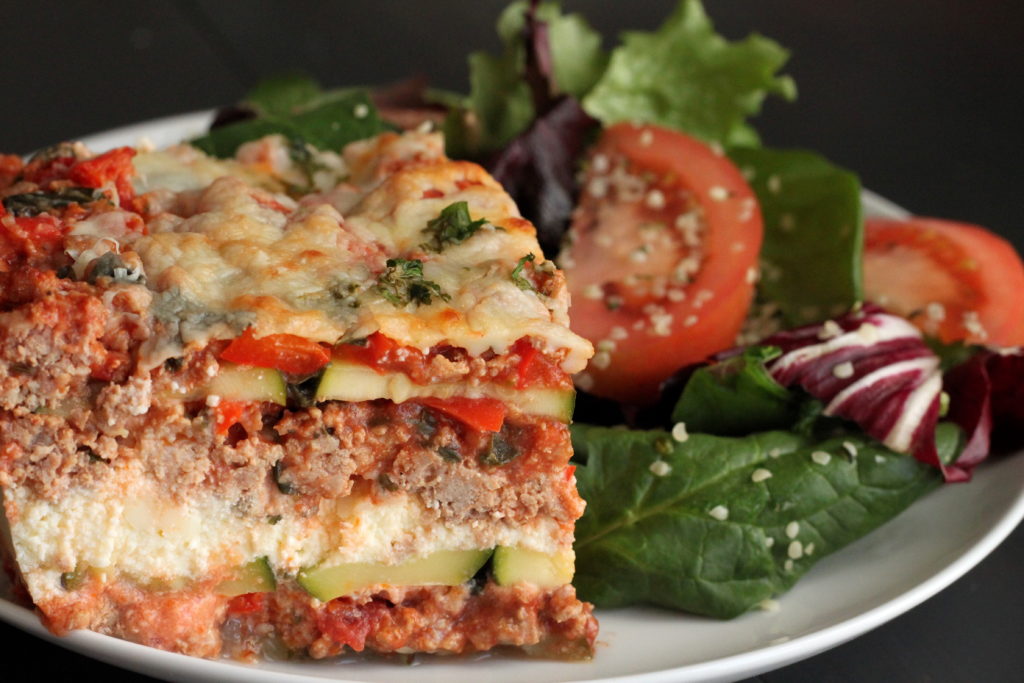Zucchini is one of the most popular vegetables of all time, and one that is always in the spotlight. From being used as a healthy and nutritious way to lose weight to being the perfect ingredient to add to a healthy and nutritious diet, the zucchini is a zucchini.
This blog is an attempt to consolidate all the information on zucchini into one place. With the help of experts in the field, I will create all the information and recipes that you will need to know about this versatile ingredient.
I am eating a zucchini today, and I can’t get enough of it. Zucchini is a vegetable that is a vegetable. It is not meat, fish, eggs, or dairy. But it is a vegetable that is low in fat and calories. When I say low, I mean really low. It only has about 30 calories per large zucchini and only a few grams of fat. And it is full of fiber, which has lots of health benefits, like keeping your digestive system running smoothly.
A Quick Look
Zucchini is a summer squash that is green (or bright yellow) in color. Zucchini is high in vitamins, minerals, fiber, carbohydrates, and even protein, and it comes in a delicious packaging. Small, delicate zucchini are the best, so get them while they’re still young and fresh. Then cook them simply (on the grill, roasted, steamed, or in a saute) or bake them.
Overview
Zucchini is a squash that grows in the summer. While zucchini is often thought of as a vegetable, it is really a fruit that develops from the zucchini flower (which is also edible and tasty).
Note: Zucchini is called “courgette” in many areas of the globe, including the United Kingdom, portions of Europe, and South Africa, while a fully grown zucchini is called “marrow.”
Zucchini has a mild, somewhat sweet, and nutty flavor. Its texture stands up to a variety of cooking methods, including frying, sautéing, and grilling, making it a summertime favorite.
Summer squash, as the name suggests, grows in hot climes and is only available during the summer months, from late June to August, depending on the environment. Zucchini is a popular vegetable that may be found all year at your store.
Identification
Zucchini come in a variety of green hues, ranging from light to dark. On closer examination, little golden specks may be seen.
You may stumble across brilliant yellow “golden” zucchini in addition to green zucchini. (There are other kinds of summer squash, but they are not the same as zucchini and have a distinct size and form.)
The size of a zucchini is determined by when it is harvested. Zucchini may grow up to a meter in length or be harvested early when just a few inches long. A standard size is about the length of a cigar. In general, smaller zucchini is preferable than older zucchini, which may be rough and watery. The flesh of younger, smaller zucchini is more delicate and delicious.
Nutritional Information
One big zucchini has 55 calories, 3.9 grams of protein, 1.0 gram of fat, 10.1 grams of carbs, 3.2 grams of fiber, and 8.1 grams of sugar.
Calcium, iron, magnesium, phosphorus, and potassium are just a few of the minerals found in zucchini. Vitamin A, vitamin C, vitamin K, and folic acid are among the vitamins available. In addition, zucchini is high in antioxidants.
Selection
Instead of big, gigantic zucchini, use young (little) zucchini.
Look for skin that is smooth, glossy, and free of blemishes and bruises.
If you find zucchini with the blossoms still attached (for example, at a farmers’ market), purchase them since they are extremely fresh. You can even get zucchini blossoms if you look hard enough; they’re worth a try as a treat.
Storage
Handle zucchini with caution since it is a fragile vegetable. Keep them in an unsealed plastic bag in the crisper of your refrigerator and consume them as soon as possible after purchasing.
Preparation
After washing the zucchini, remove the top stump and the very bottom of the zucchini.
Leave the zucchini skin on for added fiber and nutrients, plus it’s delicate and mild, so there’s no need to peel it away.
Zucchini may be sliced in a variety of ways. Grilling or steaming with larger, thicker pieces is ideal. For a sauté, rounds or half moons work well. In addition, julienne slices are ideal for roasting.
Zucchini may be used in a variety of dishes, but it can turn mushy if overcooked. Sprinkle a halved zucchini liberally with salt before cooking to prevent mushiness and maintain a meatier texture. On the top, moisture beads will emerge. Wipe away all the salt and wetness after approximately 5 minutes. This aids in the removal of excess water from the zucchini.
Use a spiral vegetable slicer to make thin, curly ribbons out of zucchini if you have one. Use the ribbons as a foundation for spaghetti sauce or other toppings after briefly steaming or boiling them (approximately 1 minute). Alternatively, you may eat the ribbons uncooked in a salad.
Baked products, such as muffins, cookies, quick breads, and cakes, benefit greatly from the inclusion of zucchini. (Hint: if you have a lot of zucchini, baking is the best way to utilize it.)
If you chance to come across any zucchini blossoms, take advantage of them! Try filling them with goat cheese, coating them in a light batter (optional), and frying them in coconut or olive oil until they’re crispy.
Lasagna with Veggie-Loaded Zucchini Noodles

With two generous servings of vegetables each dish, you can feel good about devouring this lasagna without sacrificing taste!
Ingredients
extra virgin olive oil 1 tsp extra lean turkey ground 2 pounds minced garlic 1 cup dried parsley 3 red onion cloves, chopped small 1/2 red pepper, chopped small 1 spinach, chopped 1 tsp basil (dried) 1 teaspoon oregano, dry 1 teaspoon of salt 1/4 teaspoon whole tomatoes, juiced 1 can tomato paste (14 oz) a can of 1-6 ounce zucchini, cut lengthwise and 1/4 centimeter thick 4 quail eggs 2 low-fat ricotta 15 ounces mozzarella, shredded 3/4 cup freshly grated Parmesan 1/4 cup fresh parsley to serve as a garnish
Directions
Time to Prepare: 20 minutes Time to prepare: 60 minutes There are 8 servings in this recipe.
Preheat the oven to 325 degrees F.
Using a mandolin, slice the zucchinis lengthwise or as thinly as you can (1/4 cm).
The red pepper, onion, spinach, and garlic should now be chopped. Remove from the equation.
Separately grate the mozzarella and parmesan cheeses and put them aside.
Cook until the turkey is half done in a skillet with olive oil, onion, garlic, and ground turkey (half pink). Cook until the turkey is completely cooked, then add the chopped pepper and spinach (no longer pink). Remove any surplus liquid.
Combine canned tomatoes, tomato paste, basil, parsley, oregano, and sea salt in a separate dish; set aside 2 tablespoons. Combine the remaining ingredients with the ground turkey and well combine. Take the turkey mixture off the heat.
Combine the ricotta and eggs in a separate bowl. Remove from the equation.
Assembly
Spread 2 tbsp of the leftover tomato mixture on the bottom of your pan (about 12′′ x 8′′ in size or 2 smaller pans), then arrange the zucchini noodles (1/3 of the quantity cut) lengthwise or widthwise.
Add another layer of zucchini noodles (another third of the quantity you cut) and 12 of the meat mixture.
14 cup shredded mozzarella is gently sprinkled over the ricotta/egg mixture.
Final but not least, add the last layer of zucchini (the last 1/3).
Pour in the remaining beef sauce (if you feel like there is too much, save a little for lunch another day).
12 cup shredded mozzarella, 14 cup grated parmesan, and either 12 tsp dried parsley or 1 tbsp fresh parsley are sprinkled on top for decoration.
Bake for 50-60 minutes, or until cheese is gently browned on top and bubbling throughout.
Book of Free Recipes
Every month, the Encyclopedia of Food grows as we include new delicacies and stunning food photography. Simply click this link to keep up with the latest news. Following that, we’ll give you a complimentary copy of our recipe book. We’ll also notify you when we introduce new and tasty items to the site.
For a free copy of the Encyclopedia of Food recipe book, go here.
Foods That Are Related
Zucchini is a popular summer vegetable and is high in Vitamin B1, B2, B6, B12, as well as other nutrients. Zucchinis are also a good source of potassium. They are low in calories but have a high water content and are high in fiber. When it comes to nutrition, zucchinis are among the best.. Read more about baked zucchini recipes and let us know what you think.
{“@context”:”https://schema.org”,”@type”:”FAQPage”,”mainEntity”:[{“@type”:”Question”,”name”:”Why is zucchini bad for you?”,”acceptedAnswer”:{“@type”:”Answer”,”text”:”
Zucchini is a type of squash that has a high water content. Its also very low in nutrients, and can cause diarrhea if eaten too much.”}},{“@type”:”Question”,”name”:”What can I do with lots of zucchini?”,”acceptedAnswer”:{“@type”:”Answer”,”text”:”
You can make zucchini bread, zucchini pasta, or zucchini muffins.”}},{“@type”:”Question”,”name”:”How do you make zucchini not slimy?”,”acceptedAnswer”:{“@type”:”Answer”,”text”:”
You can either grate the zucchini or you can slice it very thinly.”}}]}
Frequently Asked Questions
Why is zucchini bad for you?
Zucchini is a type of squash that has a high water content. Its also very low in nutrients, and can cause diarrhea if eaten too much.
What can I do with lots of zucchini?
You can make zucchini bread, zucchini pasta, or zucchini muffins.
How do you make zucchini not slimy?
You can either grate the zucchini or you can slice it very thinly.
Related Tags
This article broadly covered the following related topics:
- zucchini nutrition
- zucchini calories
- zucchini benefits
- calories in zucchini cooked
- calories in zucchini noodles
 HQ Grande Prairie HQ Grandie Prairie is an online news portal aimed at providing latest day to day happenings of the World to its viewers.
HQ Grande Prairie HQ Grandie Prairie is an online news portal aimed at providing latest day to day happenings of the World to its viewers.
